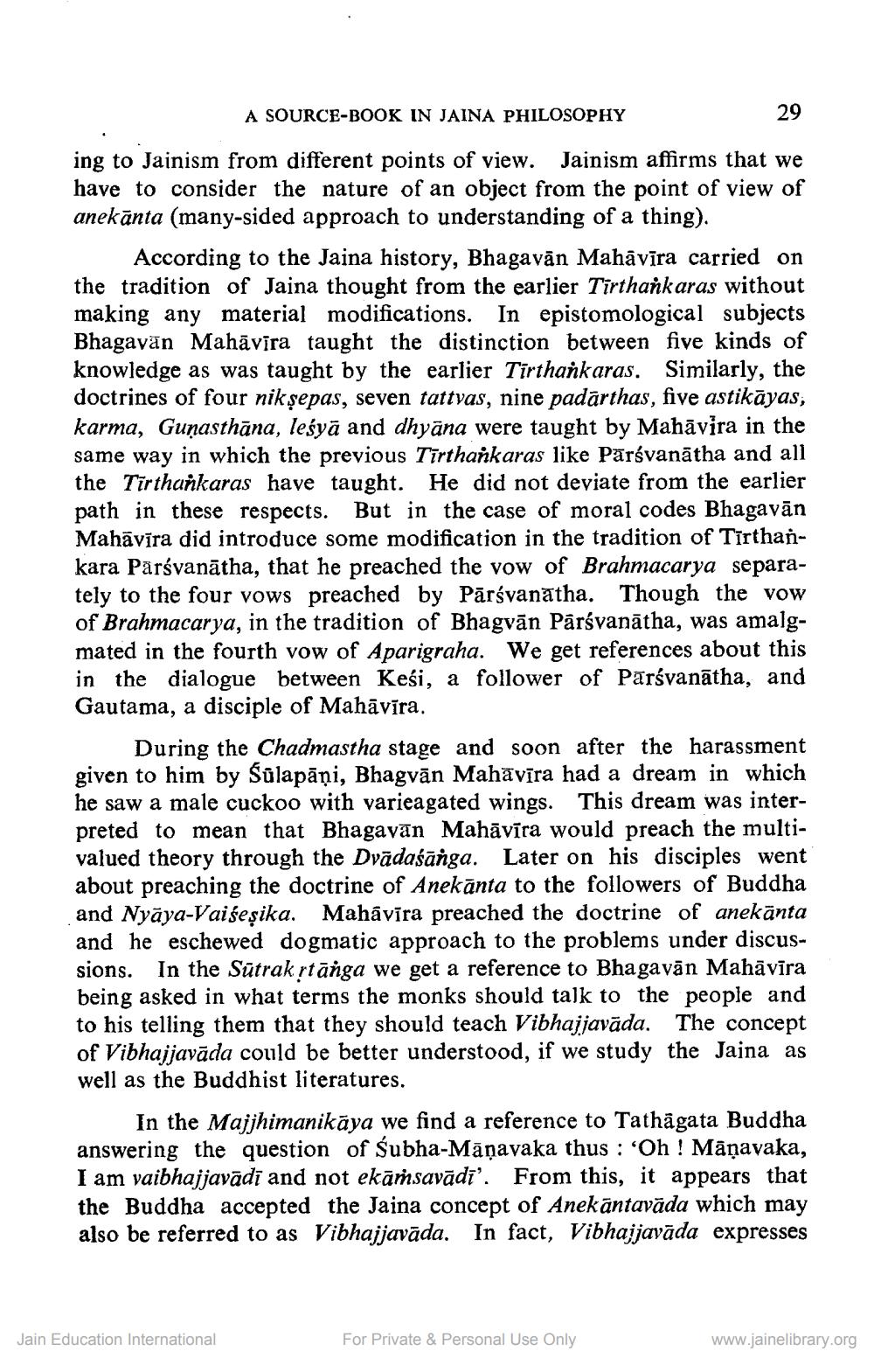________________
A SOURCE-BOOK IN JAINA PHILOSOPHY
29
ing to Jainism from different points of view. Jainism affirms that we have to consider the nature of an object from the point of view of anekānta (many-sided approach to understanding of a thing).
According to the Jaina history, Bhagavān Mahāvīra carried on the tradition of Jaina thought from the earlier Tirthankaras without making any material modifications. In epistomological subjects Bhagayān Mahāvira taught the distinction between five kinds of knowledge as was taught by the earlier Tirthankaras. Similarly, the doctrines of four nik sepas, seven tattvas, nine padarthas, five astikāyas, karma, Gunasthāna, leśyā and dhyāna were taught by Mahāvira in the same way in which the previous Tīrthankaras like Pārsvanātha and all the Tirthankaras have taught. He did not deviate from the earlier path in these respects. But in the case of moral codes Bhagavān Mahāvīra did introduce some modification in the tradition of Tīrthankara Pärsvanātha, that he preached the vow of Brahmacarya separately to the four vows preached by Pārsvanatha. Though the vow of Brahmacarya, in the tradition of Bhagvān Pārsvanātha, was amalgmated in the fourth vow of Aparigraha. We get references about this in the dialogue between Kesi, a follower of Pārsvanātha, and Gautama, a disciple of Mahāvīra.
During the Chadmastha stage and soon after the harassment given to him by Śūlapāņi, Bhagvān Mahavīra had a dream in which he saw a male cuckoo with varieagated wings. This dream was interpreted to mean that Bhagavān Mahāvīra would preach the multivalued theory through the Dvādaśānga. Later on his disciples went about preaching the doctrine of Anekānta to the followers of Buddha and Nyāya-Vaiseșika. Mahāvīra preached the doctrine of anekānta and he eschewed dogmatic approach to the problems under discussions. In the Sūtrak rtānga we get a reference to Bhagavān Mahāvīra being asked in what terms the monks should talk to the people and to his telling them that they should teach Vibhajjavāda. The concept of Vibhajjavāda could be better understood, if we study the Jaina as well as the Buddhist literatures.
In the Majjhimanikāya we find a reference to Tathāgata Buddha answering the question of Subha-Māņavaka thus : 'Oh ! Māņavaka, I am vaibhajjavādī and not ekāṁsavādī'. From this, it appears that the Buddha accepted the Jaina concept of Anekāntavāda which may also be referred to as Vibhajjavāda. In fact, Vibhajjavāda expresses
Jain Education International
For Private & Personal Use Only
www.jainelibrary.org




